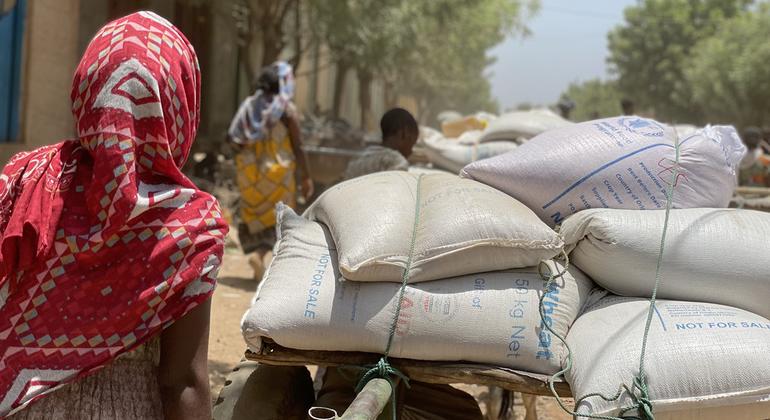
The number of hungry people in the world has not decreased for three years in a row. UN: In 2023, every 11th person in the world would go hungry, in Africa – every fifth Sustainable Development Goals
According to the State of Food Security and Nutrition in the World report, released Wednesday by five UN agencies, an estimated 733 million people were hungry in 2023: that’s one in 11 people. th in the world and every fifth in Africa.
The report was presented during a ministerial meeting of the G20 Global Alliance Against Hunger and Poverty Task Force in Brazil. The document warns that the world is significantly behind on achieving Sustainable Development Goal 2 (Zero Hunger) by 2030. The report says the world has been set back 15 years in this area, with levels of malnutrition back to levels seen in 2008-2009.
Despite some progress in some areas, it is alarming A high number of people continue to face food insecurity and malnutrition. The number of hungry people in the world has remained unchanged for three years in a row: between 713 and 757 million people were undernourished in 2023, some 152 million more than in 2019.
Data by region
Trends vary widely by region, with the proportion of hungry people continuing to rise in Africa (20.4 percent), remaining stable in Asia (8.1 percent) and declining in Latin America (6.2 percent). In 2022–2023, the hunger situation worsened in Western Asia, the Caribbean and most African subregions.
The Food and Agriculture Organization of the United Nations (FAO), the International Fund for Agricultural Development (IFAD), the United Nations Children’s Fund (UNICEF), the UN World Food Program (WFP) and the World Health Organization (WHO) warn that if current trends continue, In 2030, an estimated 582 million people will suffer from chronic undernutrition, half of them in Africa. This figure is very similar to 2015, when the Sustainable Development Goals were adopted. This is a worrying sign that progress has stalled.

Food shortages and unaffordable prices
According to the report’s authors, about 2.33 billion people worldwide were moderately or severely food insecure in 2023, a figure that has remained virtually unchanged since a sharp rise in 2020 amid the COVID-19 pandemic. Among them, more than 864 million people were severely food insecure, sometimes going without food for one or more days. This figure has remained stubbornly high since 2020, and while the situation has improved in Latin America, it remains challenging in other regions, particularly Africa, where 58 percent of the population is moderately or severely food insecure.
Another big problem, affecting more than a third of the world’s population, remains the lack of economic access to healthy food. Based on new food price data and improved calculation methodologies, the publication finds that more than 2.8 billion people could not afford healthy diets in 2022. This disparity is most pronounced in low-income countries, where 71.5 percent of the population cannot afford a healthy diet, compared with 6.3 percent in high-income countries. Notably, in Asia, North America and Europe the rate fell below pre-pandemic levels, while in Africa it rose significantly.

The effects of unhealthy nutrition
The prevalence of low birth weight globally remains at 15 percent, and the rate of stunting among children under five, although it has decreased to 22.3 percent, still exceeds the target. At the same time, the rate of wasting among children has remained virtually unchanged, and the prevalence of anemia among women aged 15–49 years has increased.
On the other hand, according to the latest estimates, the prevalence of adult obesity has steadily increased globally over the past decade: from 12.1 percent (2012) to 15.8 percent (2022). By 2030, more than 1.2 billion adults are projected to be obese.
Undernutrition, combined with overweight and obesity, has also increased sharply worldwide and across all age groups. Over the past 20 years, the prevalence of wasting and underweight has declined, while obesity has increased significantly.
Five UN agencies say these trends highlight the complexity of malnutrition in all its forms and the urgent need for targeted action, as the world is off track to achieve all seven global nutrition targets by 2030.
